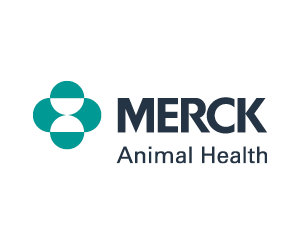Client education
The goal of client education is to give the pet owner a realistic idea of the commitment involved in managing their pet’s DM, along with positive encouragement that successful disease management is possible but can take time to achieve. Owners need adequate access to trained veterinary support staff to answer questions and troubleshoot common problems. Client education should provide owners with written information on commonly asked questions, what to watch for at home, and how to respond to changes in the patient’s condition. Veterinarians should direct owners to helpful web links, including the new Resource Center. Veterinarians should stress the importance of appropriate nutrition and weight management.
Key points of client education
Insulin mechanism, administration, handling, and storage
- Explain how insulin works and its effects on BG.
- Instruct owners in the proper handling for the specific type of prescribed insulin.
- When using Vetsulin, the vial should be shaken until a homogeneous, uniformly milky suspension is obtained (noted in the Vetsulin package insert).
- When using other insulins (glargine [Lantus], PZI [ProZinc], NPH [Novolin, Humulin]), roll but do not shake vial.
- Wipe vial stopper with alcohol prior to inserting syringe needle.
- Do not freeze insulin preparations.
- Do not expose insulin to heat; avoid leaving in parked car or prolonged exposure to direct sunlight.
- Recommend storage in refrigerator for consistency in environment.
- If stored carefully, the Task Force is comfortable using insulins beyond the date of expiration as long as they are not discolored, flocculent, or have any changes of consistency. However, the Task Force also recommends referral to package insert for instructions about shelf life after opening and discarding insulin if it becomes out of date.
- Recommend new vial if insulin changes in appearance.
- For human diabetic patients, manufacturer recommendations are to maintain glargine for only 28 days and store at room temperature.
- Discuss what to do if the patient does not eat a full meal or vomits before or after insulin administration.
- Share educational videos from AAHA with clients on insulin administration and BG monitoring.
Insulin administration
BG monitoring at home
Types of syringes
- Always use a U-40 insulin syringe with U-40 insulin and a U-100 insulin syringe with U-100 insulin.
- 0.3 and 0.5 mL insulin syringes or insulin pens are best to facilitate accurate dosing, especially in cats and dogs getting <5 U per dose.57 Clinicians should evaluate if the needles in the pens are long enough for their specific patients
- Syringes are for single use.
- Do not use “short” needles. A standard 29 g, half-inch length needle is recommended.
Troubleshooting and follow-up action
- If the pet does not eat, contact the veterinarian. Ideally, instruct owners to measure BG at home. Consider administering half the usual dose of insulin and monitor for signs of hypo- or hyperglycemia or other systemic illness.
- Help clients recognize the signs of low BG, such as lethargy, sleepiness, strange behavior, abnormal gait, weakness, tremors, and seizures, and know what to do if they occur.
- If their pet is conscious, feed a high-carbohydrate meal (e.g., rice, bread, pasta, a regular diet with added corn syrup).
- If their pet is poorly responsive or has tremors, rub 1–2 teaspoons of corn syrup onto gum tissue. Some experts use a dose of 0.125 mL/kg. Advise client of the risk of aspiration in an obtunded animal. Feed if there is a response within 5 min. Take the pet to a veterinarian.
- Home BG monitors should be veterinary-approved products calibrated for dogs and cats.
- Client is empowered to decrease or skip an insulin dose if hypoglycemia is noted, but should never increase the dose or frequency of insulin without clear instructions from the attending veterinarian.





